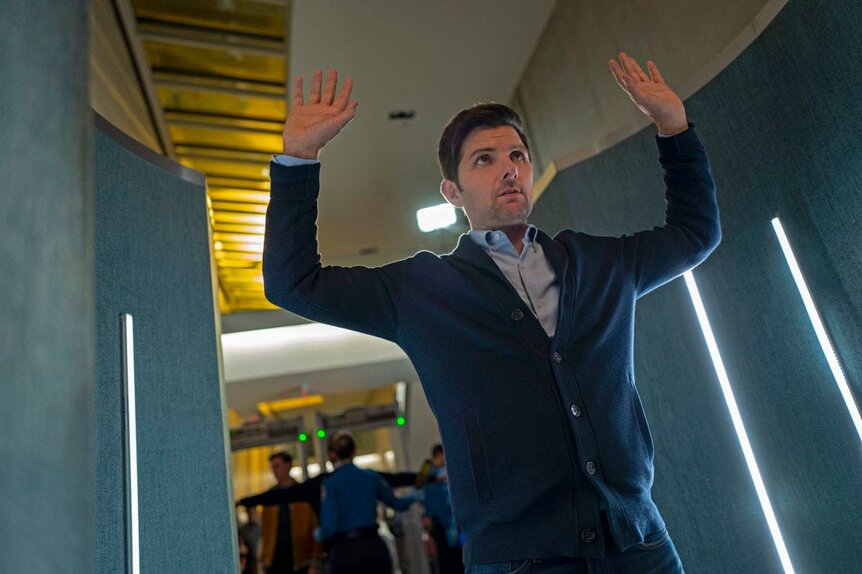Create a free profile to get unlimited access to exclusive videos, sweepstakes, and more!
First two new Twilight Zone episodes reference these four classic episodes

The most famous science fiction and horror anthology television series of all time has returned.
On Monday morning, Jordan Peele's new version of The Twilight Zone dropped its first two streaming episodes. For people who are fans of Black Mirror but never watched The Twilight Zone, this new version of the iconic '60s Rod Serling series will feel familiar, but also, perhaps, jarring in its directness. Unlike Black Mirror, the original Twilight Zone didn't dwell on technological hyperbole. Instead, the best speculative twists in the Zone are closer to thoughtful horror flips than cautionary science fiction. In this way, the new version of the series is exactly like the original. But are there deeper connections, too.
Even though one of the first two episodes has a title and set-up strikingly similar to an episode of the original series, the first aired stories in Peele's new Twilight Zone aren't really direct adaptations or remakes of any classic episodes in specific. But, there are some very familiar elements in these episodes. In fact, the first two new Twilight Zones seem to be referencing roughly four episodes from the classic series. Here's how it breaks down.
**Spoiler Alert: There are spoilers ahead for the first two episodes of The Twilight Zone: "The Comedian" and "Nightmare at 30,000 Feet."**
"The Comedian"
Starring Kumail Nanjiani as Samir, the eponymous comedian, this episode puts a deal-with-the-devil Faustian spin on art by way of stand-up comedy. How far would you go to become a great comedian? When Samir talks to an elusive famous comic (Tracy Morgan) in the bar of a comedy club, the power of making great jokes is revealed to him: just name the names of real people on stage. Once Samir starts doing this, everyone he mentions in his act — from his dog to comic rivals — ceases to exist. Essentially, Samir weaves an ever-shifting parallel universe around himself, until, he too, ceases to be real.
In terms of having an ability to get rid of people through some kind of psychic power, this episode plays slight homage to the original episode "It's a Good Life," in which a young boy (Bill Mumy) infamously threatens to send people to the cornfield if they don't make him happy. We don't know where Samir sends the people he eliminates from reality, but the set-up is similar.
More interestingly though, this story references a less-famous Zone episode called "A Nice Place to Visit." In that one, a criminal wakes up to find himself in a world in which he can't lose. He assumes he has died and gone to heaven. By the end of the episode though, he can't take all pain of all the easy success and asks to be sent to hell instead, only to discover that's where he is already.
Finally, when Samir ends up as a part of the large painting in the back of the comedy club, this feels like a clever reference to Rod Serling's other big horror show, Night Gallery. In that anthology series, a creepy work of art was often central to the stories, and people ended up inside of paintings more than once.
"Nightmare at 30,000 Feet"
Somewhat obviously, this episode references the very famous original Twilight Zone episode called "Nightmare at 20,000 Feet," in which William Shatner plays a man on a plan who believes he sees a monster lurking on the wing. In this version, 10,000 feet are added to the title and there's no monster on the wing.
Now, Adam Scott plays a hyperactive investigative journalist named Justin who listens to a creepy podcast that details a tragedy on this flight, as though it has already happened. Paradoxically, Justin ends up creating his own doom by listening to the information in the podcast. And, the monsters, in this case, aren't really literal, but instead, Justin's arrogance, casual racism, PTSD, and paranoia. Still, just so everyone knows what we're talking about, a little doll-version of the gremlin that messed with William Shatner is visible in the wreckage of the plane at the end of the episode, hanging out in the waves of the beach, mocking the main character.
But, beyond the obvious plane/monster homage, the plot device of this episode actually more deeply references the episode "A World of His Own," which, was the season finale of the first run of The Twilight Zone, in 1960. In that episode, a screenwriter has a specific tape recorder which seems to control his reality, which dovetails nicely with Adam Scott's hyper-prescient podcast. "A World of His Own," also ties back to "The Comedian," too, for one specific reason: If the screenwriter cut sections of the tape out and destroys them, the people mentioned there, cease to exist.
So, somewhere, right now, does Jordan Peele have a podcast with all of our names on it? If he mentions us on that podcast will we all cease to exist, too?
The Twilight Zone airs on CBS All-Access. New episodes are dropping every Monday at 9AM ET.




























